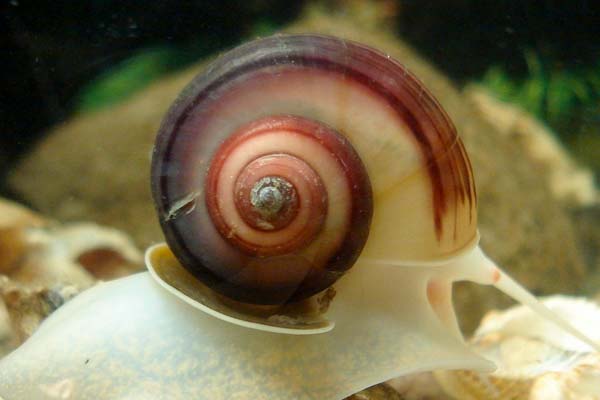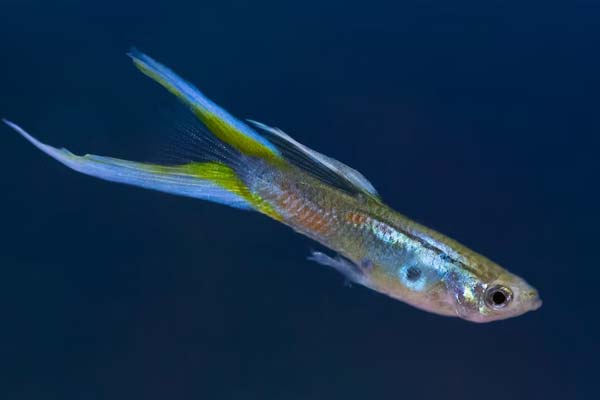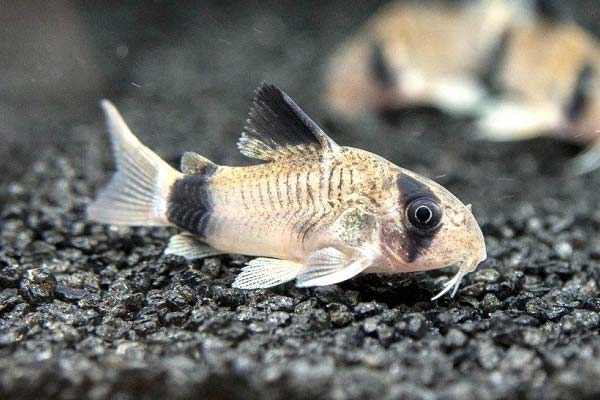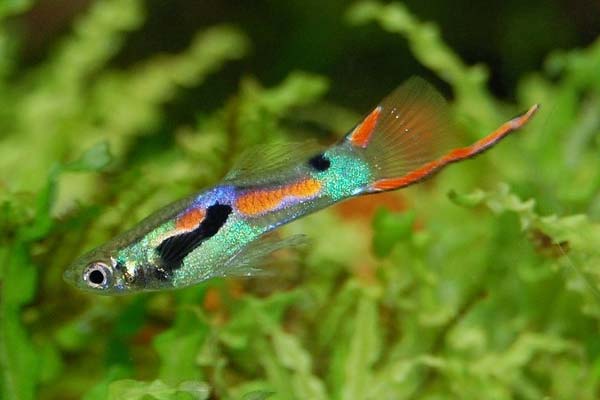Rooted Aquarium Plants: A Guide to Choosing and Caring for Your Aquatic Flora
Rooted aquarium plants are famous for aquarists who want to add a natural touch to their tank. These plants are known for absorbing nutrients from the substrate, making them an essential component. Aquascapes can be brought to life with many aquatic plants, each unique in shape, size, and color. They offer many possibilities for creating breathtaking underwater landscapes of any planted aquarium.
When selecting rooted aquarium plants, choosing healthy specimens free from pests and diseases is vital. Aquarists should also prepare the plants properly before planting them in the tank. This may involve trimming the roots or leaves or soaking the plants in a solution to remove any unwanted debris.
Planting rooted aquarium plants requires a certain level of skill and technique. Aquarists should not damage the roots or stem during planting and ensure the plants are securely anchored in the substrate. Proper care and maintenance of these plants are also crucial to their survival and growth. This may involve providing adequate lighting, CO2 supplementation, and regular fertilization.
Key Takeaways
- Rooted aquarium plants are an essential component of any planted aquarium.
- Aquarists should select healthy plants and prepare them properly before planting.
- Proper care and maintenance, including adequate lighting and fertilization, are crucial for the survival and growth of rooted aquarium plants.
Selecting and Preparing Rooted Aquarium Plants
Factors to Consider When Choosing Plants
When choosing rooted aquarium plants, several factors should be taken into account.
Firstly, consider the size of your aquarium and the available space for the plants. Some species can grow large and may not be suitable for smaller tanks.
Secondly, assess the lighting conditions in your aquarium. Different plants have varying lighting requirements, so opt for plants that flourish in the lighting you can provide.
Lastly, consider the water conditions. Certain plants thrive in acidic water, while others prefer alkaline environments. Ensure compatibility between your plant choices and the water parameters of your aquarium.
Acquiring Healthy Plants
When acquiring rooted aquarium plants, choosing healthy plants free from pests and diseases is vital. Look for plants with vibrant green leaves and strong stems. Avoid plants with yellowed or browned leaves, as this may indicate poor health. If possible, purchase plants from a reputable dealer specializing in aquatic plants.
Preparing Plants for Aquarium Placement
Before placing rooted aquarium plants in your tank, it is crucial to prepare them properly. Start by carefully removing the plants from their packaging and gently rinsing them under running water to remove debris.
If the plants have long roots, trim them to a manageable length. If the plants have been grown in soil, gently remove as much of the soil as possible without damaging the roots. Finally, anchor the plants to rocks or driftwood using fishing lines or plant weights if necessary.
When placing the plants in your aquarium, be sure to plant them firmly on the substrate. The substrate may not support the plants if it is too coarse or too fine.
Consider using a specialized substrate for planted aquariums, such as CaribSea Eco-Complete or Seachem Flourite. Finally, be sure to adjust the pH and other water conditions in your aquarium to suit the needs of your plants.
Planting Techniques for Rooted Aquarium Plants
Selecting Suitable Substrate
The substrate is an essential component for rooted aquarium plants. It provides the necessary nutrients and support for the plants to grow. When selecting a substrate, it is vital to consider the type of plants planted and the type of fish and tank setup.
Aquarium soil is a popular choice for rooted plants, as it is nutrient-rich and provides a good base for plants to grow. Hardscapes, such as rocks or driftwood, can also anchor plants in place. Root tabs can be added to the substrate to provide nutrients for root feeders.
Creating a Planting Layout
Before planting, it is crucial to create a planting layout. This involves selecting the plants and arranging them in a way that is aesthetically pleasing and allows for optimal growth. When creating a planting layout, it is crucial to consider the size of the tank, the lighting, and the water flow.
Tall plants should be placed at the back of the tank, while shorter plants can be placed in the foreground. Runners like those found in carpeting plants should be planted in a grid-like pattern to encourage growth.
Planting Methods
When planting rooted aquarium plants, it is crucial to handle them delicately to prevent root damage. Carefully remove the plants from their pots and eliminate any excess substrate before planting.
The roots should be spread out and gently pressed into the substrate. It is crucial to avoid burying the plant too deep, which can cause the roots to rot. After planting, the plants should be gently watered to help settle the substrate around the roots.
Maintenance Tips
Regular maintenance is necessary to ensure the health and growth of rooted aquarium plants. Water changes should be performed regularly to maintain water quality and nutrient levels.
Fertilizers can be added to the water column to provide additional nutrients for the plants. Pruning should be performed as needed to prevent overcrowding and promote growth. Dead or dying leaves should be removed promptly to prevent the spread of disease.
Care and Maintenance of Rooted Aquarium Plants
Lighting and Water Quality Considerations
Rooted aquarium plants require adequate lighting to grow and thrive. A general rule of thumb is to provide 8 to 12 hours of light per day, but the specific lighting needs can vary depending on the plant species. It is vital to research the lighting requirements of the specific plants in your aquarium and adjust the lighting accordingly.
In addition to lighting, water quality is crucial for the health of rooted aquarium plants. Maintaining proper water parameters such as pH, temperature, and hardness is essential, as well as conducting regular water changes to keep the water clean and free of harmful toxins.
Fertilization and CO2 Supplementation
Rooted aquarium plants rely on essential nutrients like nitrogen, phosphorus, and potassium for healthy growth. These nutrients can be supplied through liquid fertilizers or the substrate. Adhering to recommended dosage guidelines for fertilizers is crucial to prevent problems such as excessive algae growth and other complications.
Carbon dioxide supplementation can also benefit rooted aquarium plants, increasing plant growth and improving overall plant health. CO2 can be added through a CO2 injection system or carbon dioxide tablets.
Pruning and Preventing Common Issues
Regular pruning plays a vital role in maintaining rooted aquarium plants. Trimming overgrown or dead leaves encourages new growth while preventing the plant from overpowering the aquarium with its size.
Common issues with rooted aquarium plants include algae growth, nutrient deficiencies, and root rot. It is crucial to monitor the plants regularly for any signs of these issues and to take corrective action as necessary. Proper filtration and water flow can also help prevent these issues from occurring.
Popular Rooted Aquarium Plant Species
Aquarium plants are essential for maintaining a healthy and thriving aquatic environment. Rooted aquarium plants are trendy as they can be easily planted on the substrate and provide a natural look to the aquarium. Here are some of the most popular rooted aquarium plant species:
Java Fern (Microsorum Pteropus)
Java Fern, beloved by aquarium enthusiasts for its resilience and low maintenance, is a slow-growing plant that thrives without high light or CO2 levels. As a rhizome plant, it should not be planted in the substrate. Instead, it should be attached to driftwood or rocks using fishing lines or glue, making it a visually captivating addition to any aquarium.
Amazon Sword (Echinodorus Amazonicus)
The Amazon Sword, a renowned and low-maintenance aquarium plant hailing from South America, is highly sought after. Flourishing with moderate to high light and CO2 levels, this root feeder should be planted in the substrate. It reaches up to 20 inches and serves as a splendid background plant, adding allure to any aquascape.
Anubias (Anubias Barteri)
Anubias, native to Africa, is a hardy and low-maintenance aquarium plant. Thriving as a slow grower, it does not demand high light or CO2 levels. It should not be planted in the substrate as a rhizome plant, making it an easy and versatile addition to any aquarium setup.
Instead, it should be attached to driftwood or rocks using a fishing line or glue. Anubias comes in various species, including Anubias Nana and Anubias Barteri.
Cryptocoryne (Cryptocoryne Spp.)
Cryptocoryne is a widespread genus of aquarium plants that includes many different species. These plants are slow growers and do not require high levels of light or CO2. Cryptocoryne is a root feeder and should be planted in the substrate. These plants are available in various sizes and shapes, making them an excellent choice for aquascaping.
Enhancing the Aquascape with Rooted Plants
Aquarium plants are an essential element in aquascaping, and rooted plants offer a unique way to enhance the beauty of the aquarium. Incorporating rooted plants into the aquascape can create a natural and balanced environment that is visually appealing and provides a healthy habitat for aquatic life.
Incorporating Plants in Different Aquascaping Styles
Rooted plants can be used in various aquascaping styles, including the Dutch, Nature, and Iwagumi. Rooted plants can create a lush and colorful background in a Dutch-style aquascape. In contrast, rooted plants can create a more natural and wild look in a Nature-style aquascape.
In an Iwagumi-style aquascape, rooted plants can complement the rock formations and create a sense of harmony between the hardscape and the planted areas.
Creating Focal Points and Complementing Other Elements
Rooted plants can also be used to create focal points in the aquarium. For example, a carpeting plant like Hemianthus callitrichoides can create a lush green carpet that draws the eye and creates a sense of depth.
Additionally, rooted plants can complement other elements in the aquarium, such as driftwood or rocks. For example, Bucephalandra can be attached to driftwood to create a natural and beautiful effect.
Balancing Growth and Maintenance
When incorporating rooted plants into an aquascape, it is essential to balance growth and maintenance. Some plants, like water lettuce or floating plants, can overgrow and require frequent trimming.
Alternatively, certain plants, such as Bucephalandra, exhibit slow growth and demand minimal upkeep. Selecting plants that align with the aquascape’s overall design and match the aquarium owner’s maintenance capabilities is vital for a successful setup.
Conclusion
In conclusion, rooted aquarium plants can add a beautiful and natural touch to any aquarium. They enhance the aesthetic appeal of the aquarium and provide a natural habitat for fish and other aquatic creatures.
When choosing the right rooted aquarium plants, it’s essential to consider factors such as lighting, substrate, and water chemistry. Some of the best-rooted aquarium plants include Anubias, Java fern, and Amazon sword.
It’s essential to provide the right conditions for these plants to thrive, including appropriate lighting and nutrient-rich substrate. Rooted aquarium plants require regular maintenance, including pruning and fertilization, to ensure their continued growth and health.







